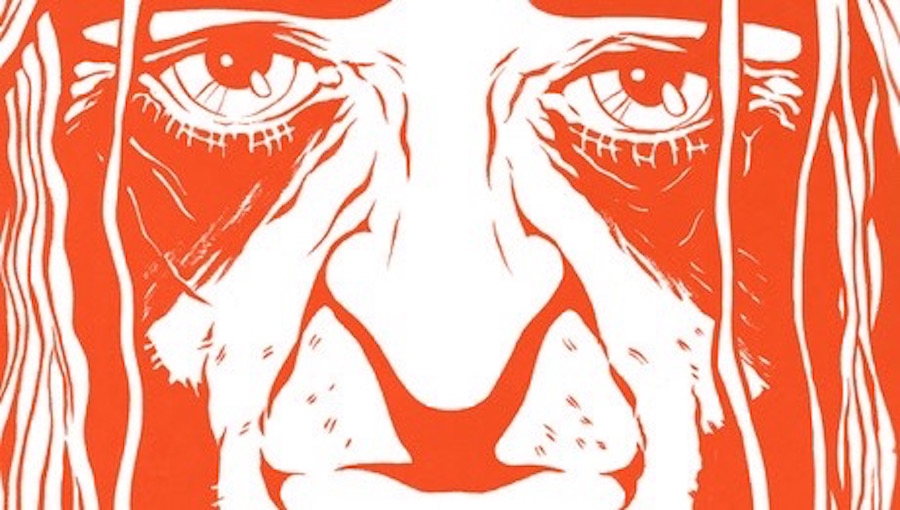I was already engrossed before even getting to page 1. When the title appears – its funky lettering reminiscent of the ’60s – the ocular shape of the letters makes me feel as though Eric is looking at me, while I also look at him. It’s like I’ve gained access to this world on the other end of a telescope. As a whole, Eric takes us on a journey through time and different realities. Tom Manning’s masterpiece is a portal to a familiar ’60s rock landscape but also a strange world with some bizarre characters. The fun part is not knowing what’s real and what isn’t. Is Eric’s reality a result of his drug usage, or is he really traveling to alternate dimensions? What’s the deal with the TV? Why does Eric seem to be treated like a god? It’s all unclear, but so intriguing. There’s violence, there’s mystery, and there’s rock and roll.
Eric is just Eric. No last name, no family background. He was a big-deal musician in the ’60s, ’70s, and ’80s and is now releasing a “Best of” collection. As he is trying to promote the album, a drug problem and sedentary, channel surfing lifestyle raises some difficulties for him. I feel bad for Eric. He’s an old drug addict who can’t be the big star that he was in his youth. He can’t perform like he used to, and he doesn’t have a grasp on how listeners perceive his music—even now, decades later. Eric is pretty much a walking disaster. He preaches free love and severs relationships. He actually seems more in tune with his TV than with reality.
The reading experience is enhanced through the flow of the panels. Manning is a master of layout. The angles and shapes of the panels contribute to the story told within them. Manning also knows how to make sound come to life in black and white. I’ve never read narrated channel surfing before; it’s quite an awesome experience. The series of panels in Part 2 when Eric is in a hotel room shows Manning’s true artistic brilliance in capturing the total dejectedness of Eric’s life. Between flashbacks and drug trips, Eric starts to develop a conspiracy theory and embarks on a journey to figure it all out. But is it all just one big drug trip? If that’s the case, then anything is possible. Everything seems so far fetched considering Eric’s a drug addict, but it’s still intriguing to imagine that he might be onto something real.
Manning also provides Eric’s song lyrics and illustrates his performances. It’s fun to imagine Eric’s sound as a musician. In my mind, Eric sings assertively and takes all of his ridiculous lyrics seriously. The lyrics are amusing and nonsensical but clearly maintain a quality rock and roll. To bring this to life even more, Manning was able to get three of Eric’s songs recorded as part of his Kickstarter campaign. Arthur O’Shaughnessy’s poem, “Ode,” is also interwoven throughout Eric. The poem is a beautiful articulation of the possibilities of life—dreaming big and making something of yourself and of the world. At first glance, Eric’s life path seems contrary to the message of O’Shaughnessy’s poem. But once he starts following the conspiracy theory, we see his life develop a purpose.
Eric pays homage to rock and roll and to dreamers. Tom Manning blurs realities and creates interwoven worlds that—despite seeming impossible—contribute to an understanding of the real world. Eric, himself, is like a character in a song; he’s on a journey of not only self-discovery but also learning about the world. Eric is poetic, engaging, and entertaining—a rockin’ read.
Creative Team: Tom Manning
Publisher: Robots and Monkeys Publishing
Click here to purchase.

